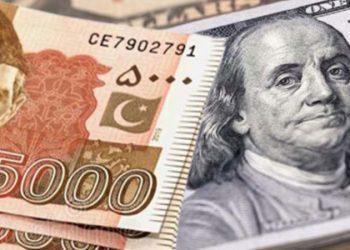Remittances to low- and middle-income countries are projected to have grown a strong 7.3% to reach $589 billion in 2021, while Pakistan has another year of record remittances with growth at 26% and levels reaching $33 billion in 2021.
According to estimates from the World Bank’s Migration and Development Brief released recently:
Remittances to South Asia likely grew around 8% to $159 billion in 2021. In addition to the common drivers, the government’s Pakistan Remittance Initiative to support transmission through formal channels attracted large inflows. Moreover, Afghanistan’s fragile situation emerged as an unexpected cause of remittances in 2021 intended for Afghan refugees in Pakistan as well as for families in Afghanistan. Higher oil prices aided economic recovery and drove the spike in remittances from the GCC countries which employ over half of South Asia’s migrants. Economic recovery and stimulus programmes in the United States also contributed to the growth. Remittances is the dominant source of foreign exchange for the region, with receipts more than twice as large as FDI in 2021.
According to the World Bank:
South Asia has the lowest average costs of any world region at 4.6%. But sending money to South Asia through official channels is expensive compared with informal channels which remain popular. Cost-reducing policies would create a win-win situation welcomed by migrants and South Asian governments alike, said the report. This return to growth is more robust than earlier estimates and follows the resilience of flows in 2020 when remittances declined by only 1.7% despite a severe global recession due to Covid-19.
Michal Rutkowski, World Bank Global Director for Social Protection and Jobs, said:
“Remittance flows from migrants have greatly complemented government cash transfer programs to support families suffering economic hardships during the Covid-19 crisis. Facilitating the flow of remittances to provide relief to strained household budgets should be a key component of government policies to support a global recovery from the pandemic.”
Factors contributing to the strong growth in remittance are:
Migrants’ determination to support their families in times of need, aided by economic recovery in Europe and the United States which in turn was supported by the fiscal stimulus and employment support programs. In the Gulf Cooperation Council (GCC) countries and Russia, the recovery of outward remittances was also facilitated by stronger oil prices and the resulting pickup in economic activity.
Remittances registered strong growth in most regions:
Flows increased by 21.6% in Latin America and the Caribbean, 9.7% in Middle East and North Africa, 8% in South Asia, 6.2% in Sub-Saharan Africa, and 5.3% in Europe and Central Asia.
While, Remittances of other region:
East Asia and the Pacific Remittances fell by 4%– though excluding China, remittances registered a gain of 1.4% in the region. In Latin America and the Caribbean, growth was exceptionally strong due to economic recovery in the United States and additional factors, including migrants’ responses to natural disasters in their countries of origin and remittances sent from home countries to migrants in transit.






